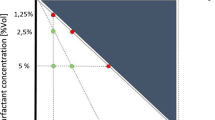Abstract
In the present work, an investigation has been made into the electrical discharge machining process (EDM) when both graphite powder and surfactant-mixed dielectric fluid were used during EDM of precipitation hardening stainless steel PH17-4. The addition of graphite powder in the dielectric fluid results in uniform distribution of discharge, which improves surface finish. However, agglomeration of graphite particles is found in the dielectric due to the electrostatic forces among the graphite powder particles. The addition of surfactant in the dielectric increases dielectric conductivity and in turn reduces relay time of discharge. This increases actual discharge time, which results in more material removal. At the same time, uniform distribution of graphite powder particles in the dielectric fluid is achieved. This leads to increase in discharge frequency, which results in increase in material removal rate and surface finish. Taguchi parameter design approach was used to get an optimal parametric setting of EDM process parameters namely: peak current, surfactant concentration and graphite powder concentration that yields to optimal process performance characteristics such as material removal rate, surface roughness, white layer thickness and surface crack density. Individual effect of process parameters on performance characteristics was also studied. To identify the significance of parameters on measured response, the analysis of variance has been carried out. Further, mathematical models were developed by performing nonlinear regression analysis to predict process performance characteristics. Confirmation tests were conducted at their respective optimal parametric settings to verify the predicted optimal values of performance characteristics.











Similar content being viewed by others
References
Beri N, Maheshwari S, Sharma C, Kumar A (2008) Performance evaluation of powder metallurgy electrode in electrical discharge machining of AISI D2 steel using Taguchi method. Int J Mech Ind Aerosp Eng
Kansal HK, Singh S, Kumar P (2005) Parametric optimization of powder mixed electrical discharge machining by response surface methodology. J Mater Process Technol 169:427–436
Guu YH, Hocheng H (2001) Effects of work piece rotation on machinability during electrical discharge machining. Mater Manuf Process 16:91–101
Chattopadhyay KD, Verma S, Satsangi PS, Sharma PC (2009) Development of empirical model for different process parameters during rotary electrical discharge machining of copper-steel (EN-8) system. J Mater Process Technol 209:1454–1465
Ghoreishi M, Atkinson J (2002) A comparative experimental study of machining characteristics in vibratory, rotary, and vibro: rotary electro discharge machining. J Mater Process Technol 120:374–384
Pecas P, Henriques E (2003) Influence of silicon powder mixed dielectric on conventional discharge machining. Int J Mach Tools Manuf 34:1465–1471
Bulent Ekmekci A, Tekkaya E, Erden A (2006) A semi-empirical approach for residual stresses in electric discharge machining (EDM). Int J Mach Tools Manuf 46:858–868
Kansal HK, Singh S, Kumar P (2006) Performance parameters optimization of powder mixed electrical discharges machining (PMEDM) by Taguchi method. West Indian J Eng 29:81–94
Khan AA (2008) Electrode wear and material removal rate during EDM of aluminum and mild steel using copper and brass electrodes. International Journal Advanced Manufacturing Technology 39:482–487
Payal HS, Choudhary R, Singh S (2008) Analysis of electro discharge machined surfaces of EN-31 tool steel. J Sci Ind Res 67:1072–1077
Choudhary R, Kumar H, Garg RK (2010) Analysis and evaluation of heat affected zones in electric discharge machining of EN-31 die steel. Indian J Eng Mater Sci 17:91–98
Shabgard M, Seyedzavvar M, Oliaei SNB (2011) Influence of input parameters on the characteristics of the EDM process. J Mech Eng 57:689–696
Jabbaripour B, Sadeghi MH, Shabgard MR, Faraji H (2013) Investigating surface roughness, material removal rate and corrosion resistance in PMEDM of γ- TiAl intermetallic. J Manuf Process 15:56–68
Bhattacharya A, Batish A, Kumar N (2013) Surface characterization and material migration during surface modification of die steels with silicon, graphite and tungsten powder in EDM process. J Mech Sci Technol 27:133–140
KL W, Yan BH, Huang FY, Chen SC (2005) Improvement of surface finish on SKD steel using electro discharge machining with aluminum and surfactant added dielectric. Int J Mach Tools Manuf 45:1195–1201
Dukhin AS, Goetz PJ, Ionic properties of so—called “non-ionic” surfactants in non-polar liquids, Dispersion Technology Inc., New York, pp 1–21.
Bhattacharyya B, Gangopadhyay S, Sarkar BR (2007) Modelling and analysis of EDMed job surface integrity. J Mater Process Technol 189:169–177
Author information
Authors and Affiliations
Corresponding author
Additional information
Technical Editor: Alexandre Mendes Abrao.
Rights and permissions
About this article
Cite this article
Reddy, V.V., Kumar, A., Valli, P.M. et al. Influence of surfactant and graphite powder concentration on electrical discharge machining of PH17-4 stainless steel. J Braz. Soc. Mech. Sci. Eng. 37, 641–655 (2015). https://doi.org/10.1007/s40430-014-0193-4
Received:
Accepted:
Published:
Issue Date:
DOI: https://doi.org/10.1007/s40430-014-0193-4




